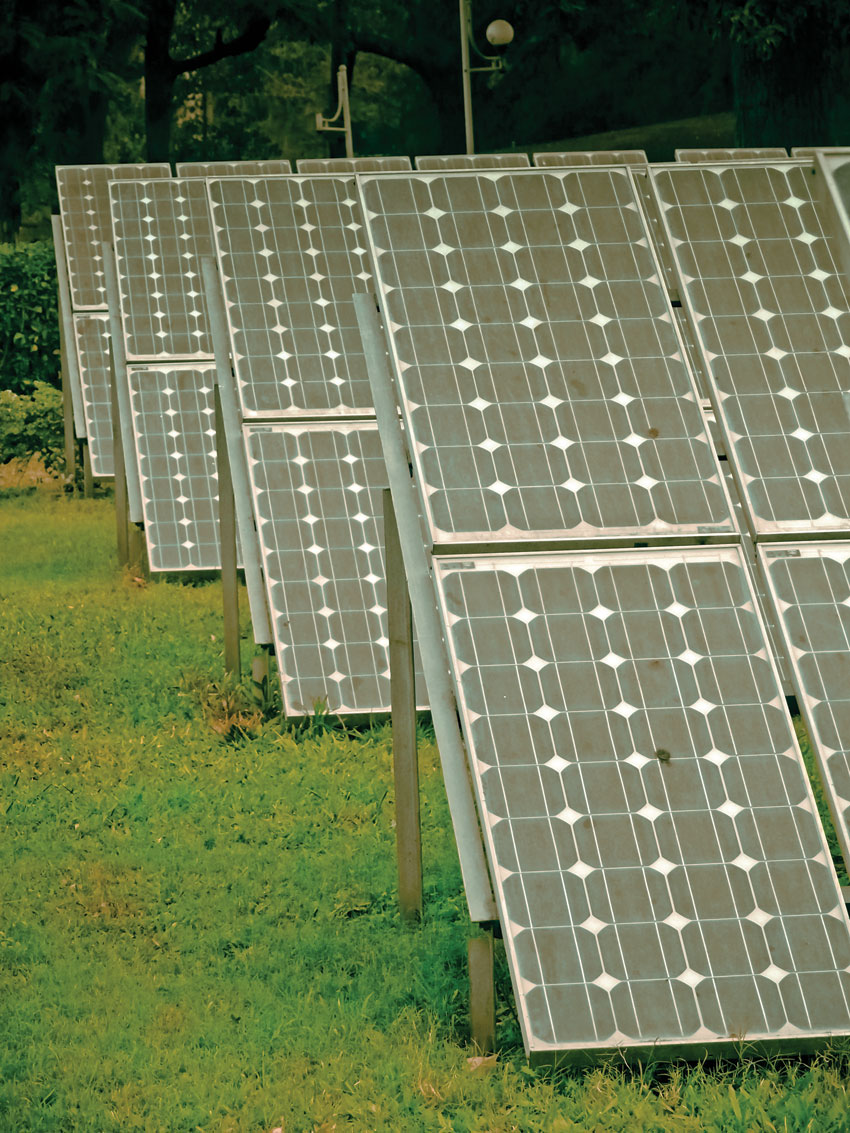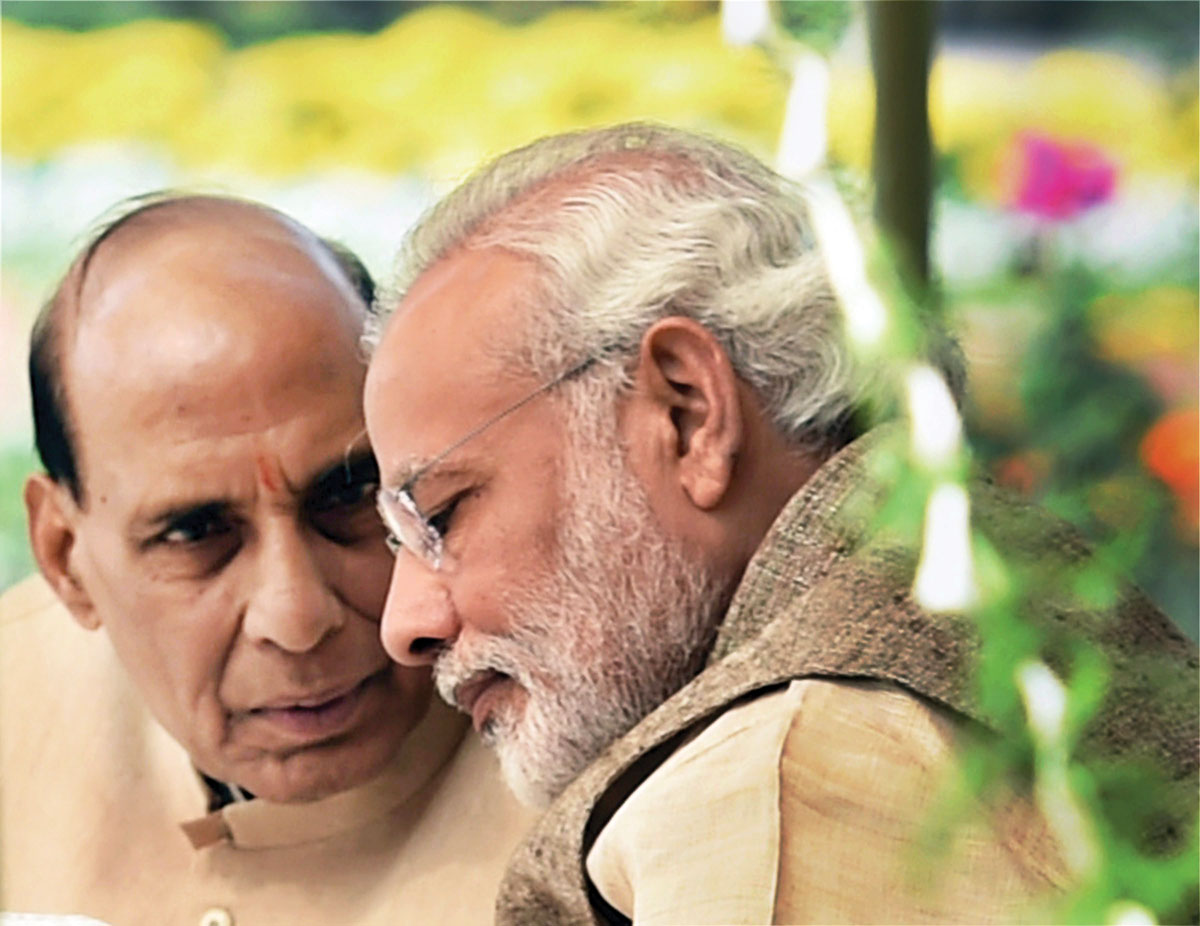LAND ACQUISITION BILL
File photo of Prime Minister Narendra Modi with Union Home Minister Rajnath Singh during a lunch hosted for the Governors attending the 46th Governors Conference, at the Rashtrapati Bhavan, in New Delhi, Dec. 12. (Subhav Shukla | PTI)
The failure of the BJP-led government to successfully legislate an industry-friendly Land Acquisition Bill is the first major setback to Prime Minister Narendra Modi’s pro-development agenda. The ordinance issued by the government to replace the earlier restrictive statutes will be allowed to lapse. The ruling BJP does not enjoy a majority in the Upper House, the Rajya Sabha, and simply did not have the numbers to push the new law, writes Siddharth Srivastava.
There has been no room to evolve a consensus, with the Congress party, led by the belligerent Rahul and Sonia Gandhi, adamant on disrupting Parliament proceedings on the twin issues of Lalitgate and the Vyapam scam. As a compromise and consensus measure, the government is looking to re-instate the consent clause, perhaps with in a diluted form. No doubt, the present law on Land Acquisition in India is highly investment-unfriendly due to restrictive provisions that makes any purchase of land for industrial activity a costly and time consuming process.
Acquisition of much-in-demand agricultural land, for example, requires statutory social impact assessment that mandates consent from 70% of farmers for public-private partnership projects and 80%, when land is acquired by private entities.
This process can take up to three years. Acquisition plans can be held to ransom by a small group of farmers who could easily be politically motivated to ensure that a project fails. Industry leaders continue to re-iterate that acquiring land is a big hurdle in achieving Modi’s “Make in India,” manufacturing vision.

Masayoshi Son, CEO of Japan’s SoftBank, has said his company would back manufacturing solar panels in India instead of imports, if New Delhi makes land available. Goenka Group Chairman Sanjiv Goenka recently said the watered down Land Acquisition Bill will make it difficult to acquire land for large industrial projects. “It going to be difficult or almost impossible,” he said.
It has been estimated acquisition problems affect over 40% of major stalled projects in India, though there are other issues that also need to be addressed. One big casualty could be Modi’s grand plans to push clean energy. Over $300 billion foreign investments are being planned in India’s renewable sector over the next ten years. India’s Ministry of New and Renewable Energy recently issued a year-by-year breakdown of its target to achieve 100GW of solar capacity by 2022 under the National Solar Mission or NSM. Minister for power, coal and renewable energy Piyush Goyal has said $92 billion investment will be needed to achieve the rapid rise in solar capacity from 4000 MW presently.
Given government plans, there is already heightened interest in India’s solar sector, signified by $20 billion committed by Japan’s SoftBank Corp and Taiwan’s Foxconn to establish solar PV projects across the country. Other investors include Trina Solar, Hanwha Q Cells, First Solar, SkyPower and SunEdison.
One big stumbling block is availability of large tracts of land for big solar projects. It is estimated proposed solar parks will need up to 500,000 acres of land, a big chunk near urban areas where demand for electricity is the highest. Needless to say, these are the areas where it is most difficult and expensive to acquire land. Yet, all is not lost.
Observers say, there is need for innovative thinking to push forward and circumvent unwieldy statutory norms. An example is canal top solar projects taking advantage of the large irrigation networks that exist in the country. For large solar projects, there is need to co-opt the local community as stakeholders and co-beneficiaries and allay their suspicions of being short-changed.
This has been the case, for example recently in the state of Andhra Pradesh, where farmers have fully backed land acquisition by the government as the process has been done in a transparent manner. A legally binding promise has been made that land owners will be part of capital and income appreciation process in future.
Andhra Pradesh Chief Minister Chandrababu Naidu has managed to persuade thousands of farmers to voluntarily “pool” their land in order to set up a new state capital. Once constructed, farmers will receive 1,000 square yards of residential property and 200-450 square yards of commercial property for each acre offered.
This developed land is expected to be worth Rs. 80-90 million per acre, against current price of Rs. 10-20 million. In addition, farmers will get an annuity of Rs. 30,000-50,000, payable monthly, for 10-years till the city is built. Landless laborers will also be compensated. Writing in the Economic Times recently, noted columnist Swaminathan Aiyar has said: “A better, proactive approach (to acquisition) would be to showcase land policy as the road to prosperity, not expropriation. Modi should have a three-pronged strategy. The first priority should be land pooling, (initiated by Naidu). The second priority should be land leasing. Forced acquisition should be the third and last priority.”
Land acquisition is a tricky matter. The Modi government will need to demonstrate sufficient guile and tact to ensure the issue does not turn into an insurmountable hurdle to India’s progress.


